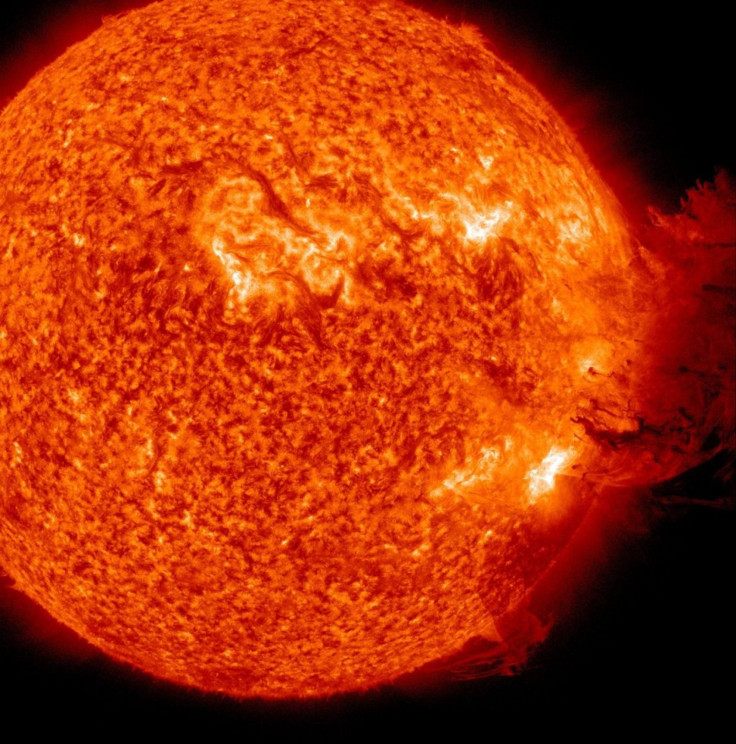Solar Flare Could Cause Auroras, Satellite Interference

The strongest solar flares seen in five years are sending a mass of charged particles towards Earth, which could cause radio interference and auroral displays.
According to NASA, the Sun unleashed an M-2 (medium-sized) solar flare, an S1-class (minor) radiation storm and a spectacular coronal mass ejection (CME) on June 7, 2011 from sunspot complex 1226-1227. The large cloud of particles mushroomed up and fell back down looking as if it covered an area of almost half the solar surface.
The US National Weather Service (NWS) said in a statement that the solar flare released radiation not witnessed since 2006, with the present one measured by NASA as M-2 or medium sized solar flare that carries a substantial coronal mass ejection (CME) ... and is visually spectacular.
According to NASA models, the CME is moving at 1400 km/s. This radiation storm did not squarely blow to Earth, but it should deliver a glancing blow to Earth's magnetic field during the late hours of June 8th or June 9th.
The flares were accompanied by a coronal mass ejection, or CME, which is a cloud of hot charged particles that moves at high speed outward from the Sun's surface. The flares are seen first, as the light and radiation take only eight minutes to get to Earth. The CME moves slower and takes days, in the same way that thunder follows lightning.
Solar flares happen because the Sun's magnetic field is a complicated shape. Earth's field is like a giant bar magnet, with a north and south pole and neat lines describing a donut-like shape.
High-latitude sky watchers should be alert for Auroras or Aurora Borealis, also known as Northern lights, which are created as a result of some natural mechanism between solar wind, ions flow, Earth's magnetic field and collisions between ions and atmospheric atoms and molecules that cause energy releases in the form of colorful lights.
The aurora borealis (Northern Lights) and aurora australis (Southern Lights) will likely be visible in the late hours of June 8 or 9. With the sun illuminating most of the auroral zone in Russia and Scandinavia, the aurora will be mainly visible in North America.
Visible auroral activities are predicted for Thursday and Friday as well, overhead from Inuvik, Yellowknife, Rankin, Igaluit and the surrounding areas. The visibility may be low on the horizon from Seattle, Des Moines, Chicago, Cleveland, Boston, and Halifax on Thursday, and Prince Rupert, Calgary, Minot, Bemidji, Stevens Point, Traverse City and Quebec City, Canada on Friday.
While a strong solar flare increases the chance of a spectacular light show, the electromagnetic pulse can also disrupt satellite communications, power grids and radio traffic when it passes the Earth. Some industries that are usually affected by solar flares include electrical power grid companies, airlines, GPS, military and ocean shipping routes.
Flares send bursts of X-rays and charged particles -- mostly protons -- out from the Sun's surface into space. Occasionally one is pointed towards the Earth. They are classified according to how powerful they are, as A, B, C, M or X, with X being the most powerful. The flare SDO detected was an M-class flare on June 7.
The last big solar flare occurred in 2006, and more powerful ones have occurred in 2005 and 2003 as well. The most powerful ever recorded was in 1859 and was sufficiently strong to damage electrical equipment.
© Copyright IBTimes 2025. All rights reserved.





















